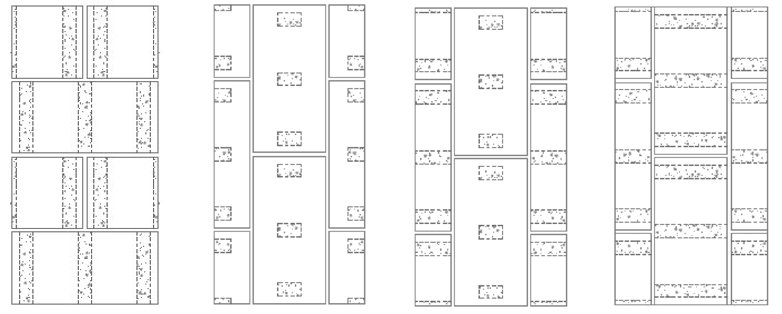Thomas Ring1, Sreekanta Das2, and David Stubbs3
1,2 University of Windsor, Windsor, ON, N9B 3P4, Canada
3 Canada Masonry Design Centre, Mississauga, ON, L5T 2N7, Canada
ABSTRACT
The current Canadian standard recommends strength reduction factors of 0.5 and 0.7 when compressive force is applied normal to the head face (parallel to the bed face). This strength reduction factor value is 0.7 if the grout is horizontally continuous (when there is no web interruption in the grout) and it is 0.5 if the grout is not horizontally continuous (when web interruption exists). It is argued that the reduction factors (0.5 and 0.7) suggested in the Canadian standard is highly conservative and is not based on any detailed study. Thus, a detailed research program based on experimental study on prism specimens with three levels of grout interruption was undertaken. The prism specimens were loaded in two different directions: (i) parallel to the bed face and (ii) perpendicular to the bed face. Varying degrees of web interruption were incorporated in the prism specimens to investigate the effects of various levels of web interruption on the compressive strength when loaded normal to the head face. This paper discusses the test specimens and test methods used and the results obtained from the study.
KEYWORDS: masonry prism specimens, loading parallel to bed face, grout interruption, strength reduction factor
B8-3



